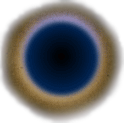“The condition of music is that it is the live production of organised sounds that extend in time and affect our inner selves without the necessity of mediation through verbal or conceptual structures.
The condition of video is that it is the live production of organised images that extend in time and affect our inner selves without the necessity of mediation through verbal or conceptual structures. As one plays a musical instrument the result is an immediate feedback through the ear of what the body and mind has created. As one plays a video instrument the result is an immediate feedback through the eye of what the body and mind has created. Video is the visual equivalent of music.
My own concern with video has been the search for and discovery of a coloured visual expression of equivalent potency to that of music. Music needs no external references other than itself. It just is. There is now no reason why a visual event should need external references. Let it be. Video as a medium is unparalleled by any other in its ability to allow immediate visual and aural experience extend in time and be recorded. It extends our possibilities for expression.”
This was written in 1975 – I’d phrase it a little differently now, but it makes the central point.
All my videos from the Seventies involve a complex real-time performance between one or more electronic visual artist(s) and one or more musician(s) and electronic performer(s) – always including my key collaborator, Simon Desorgher. Each had visual and aural feedback of one another’s output in real time and the visual element thus became an equivalent to the production of live music. The recordings saved were the best “take” achieved during the typically three-day set-up and recording schedule.
Each video would be based on a theme, usually a process, and the improvisation would be based around an agreed structure in time for the various visual and sound elements selected. Even later, when my visual control developed greater sophistication through familiarity and devices such as the Videokalos Colour Synthesiser [2.4.4.0], the improvisation was retained as a key “structural” component.
This placed the resulting video in a completely different “space” artistically to that occupied by other people working with video in the UK at that time, perhaps having more in common with a few practitioners in the USA who were similarly trying to explore the achievable visual boundaries of this new medium. In 1978 I founded a travelling performance group called VAMP (for Video And Music Performers), but despite sell-out shows at the ICA, Birmingham Arts Lab etc it could not continue due to lack of funding.
